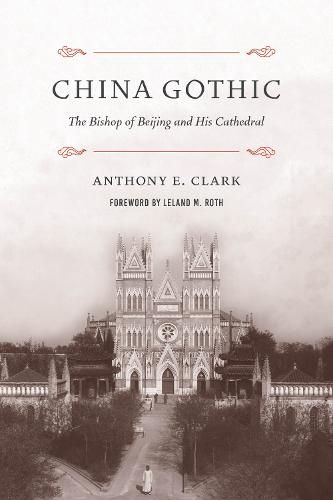Readings Newsletter
Become a Readings Member to make your shopping experience even easier.
Sign in or sign up for free!
You’re not far away from qualifying for FREE standard shipping within Australia
You’ve qualified for FREE standard shipping within Australia
The cart is loading…






As China struggled to redefine itself at the turn of the twentieth century, nationalism, religion, and material culture intertwined in revealing ways. This phenomenon is evident in the twin biographies of North China’s leading Catholic bishop of the time, Alphonse Favier (1837-1905), and the Beitang cathedral, epicenter of the Roman Catholic mission in China through incarnations that began in 1701. After its relocation and reconstruction under Favier’s supervision, the cathedral-and Favier-miraculously survived a two-month siege in 1900 during the Boxer Rebellion. Featuring a French Gothic Revival design augmented by Chinese dragon-shaped gargoyles, marble balustrades in the style of Daoist and Buddhist temples, and other Chinese aesthetic flourishes, Beitang remains an icon of Sino-Western interaction.
Anthony Clark draws on archival materials from the Vatican and collections in France, Italy, China, Poland, and the United States to trace the prominent role of French architecture in introducing Western culture and Catholicism to China. A principal device was the aesthetic imagined by the Gothic Revival movement of the eighteenth and nineteenth centuries, the premier example of this in China being the Beitang cathedral. Bishop Favier’s biography is a lens through which to examine Western missionaries’ role in colonial endeavors and their complex relationship with the Chinese communities in which they lived and worked.
$9.00 standard shipping within Australia
FREE standard shipping within Australia for orders over $100.00
Express & International shipping calculated at checkout
As China struggled to redefine itself at the turn of the twentieth century, nationalism, religion, and material culture intertwined in revealing ways. This phenomenon is evident in the twin biographies of North China’s leading Catholic bishop of the time, Alphonse Favier (1837-1905), and the Beitang cathedral, epicenter of the Roman Catholic mission in China through incarnations that began in 1701. After its relocation and reconstruction under Favier’s supervision, the cathedral-and Favier-miraculously survived a two-month siege in 1900 during the Boxer Rebellion. Featuring a French Gothic Revival design augmented by Chinese dragon-shaped gargoyles, marble balustrades in the style of Daoist and Buddhist temples, and other Chinese aesthetic flourishes, Beitang remains an icon of Sino-Western interaction.
Anthony Clark draws on archival materials from the Vatican and collections in France, Italy, China, Poland, and the United States to trace the prominent role of French architecture in introducing Western culture and Catholicism to China. A principal device was the aesthetic imagined by the Gothic Revival movement of the eighteenth and nineteenth centuries, the premier example of this in China being the Beitang cathedral. Bishop Favier’s biography is a lens through which to examine Western missionaries’ role in colonial endeavors and their complex relationship with the Chinese communities in which they lived and worked.